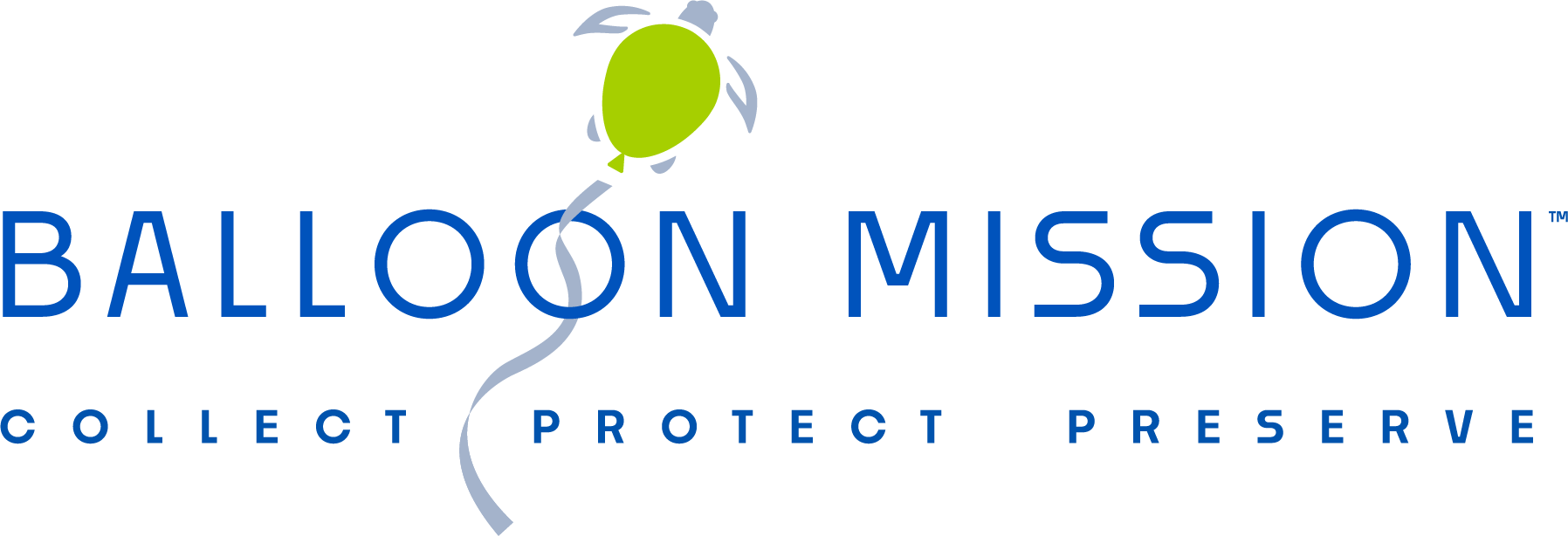Why do we need a balloon collection program?
Metrics:
Why are we collecting metrics?
Similar to the data captured in a balloon survey, we are gathering information to understand how balloons are being used.
What are the big events and generally how many balloons are at that event?
We are currently gathering the following information:
- Balloon Location Name
- Total number of Balloons per location
- Number of latex/rubber balloons
- Number of foil /mylar balloons
- Shape
- Occasion
- Large Displays or Installations
Our goal is to collect ONE MILLION balloons.
Given the size of the current balloon displays, we don’t think it will take that long to get there!
We’ve seen an incredible response to our program. Once people are aware that balloons are actually an issue, they WANT an option to do better for the environment. We have had great momentum and will continue to grow and share the message. Our biggest success is the sense of value and empowerment the Balloon Mission has brought to our participants.
Are you someone who wants to help make the world better? Come join us on the Balloon Mission!

Other Ways to Celebrate without Balloons:
Planting trees, and gardens, building birdhouses, or dedicating a bench in a park are great ways to honor the memory and promote life.

The second problem is a more complicated one. Awareness.
People generally don’t think about balloons. Why would they? They’re fun. It’s not a big deal if they fly away or don’t end up in the trash. Most people are truly shocked when we share what happens to balloons and their adverse impact.
Balloon Mission is taking an innovative approach to addressing this problem by tackling it on the front end. Why can’t we collect balloons and re-purpose them in a way that keeps them from the traditional waste management system entirely? Are there end-of-use solutions available that can lessen balloon litter? Can we raise awareness, and galvanize people towards a new cultural norm to balloon responsibly? Or even make the choice to use something other than balloons to celebrate or memorialize an event? Well, that’s our mission, to try to do better with how we use balloons.
We’ve created the first program that collects balloons after an event but before it becomes litter.
We’re raising awareness with children and families who celebrate with balloons on the unintended harm they have on the environment. Through community outreach programs and assemblies within elementary schools, libraries, nature, and cultural centers we’re empowering children and their families to celebrate responsibly. We also have balloon bins placed in high schools and middle schools to capture balloons from sporting events, sweet sixteens, car washes, etc. If there is a balloon being used, we want to collect it and re-purpose it. We also offer alternative ways to celebrate instead of balloons.
We’re currently exploring different end-of-use solutions for the balloons and welcome ideas and feedback. Together we can find a good solution!
Here are a few of our working ideas:
– Balloon Sculpture – Our initial balloon collections will be used in a sculpture to educate people on the harmful effect of latex and foil balloons on our wildlife.
– In the short term we will be converting balloons into energy, powering homes and businesses on Long Island with the help of Covanta.
– In the long term, balloons and other party supplies can be converted into industrial flooring through TerraCycle.

